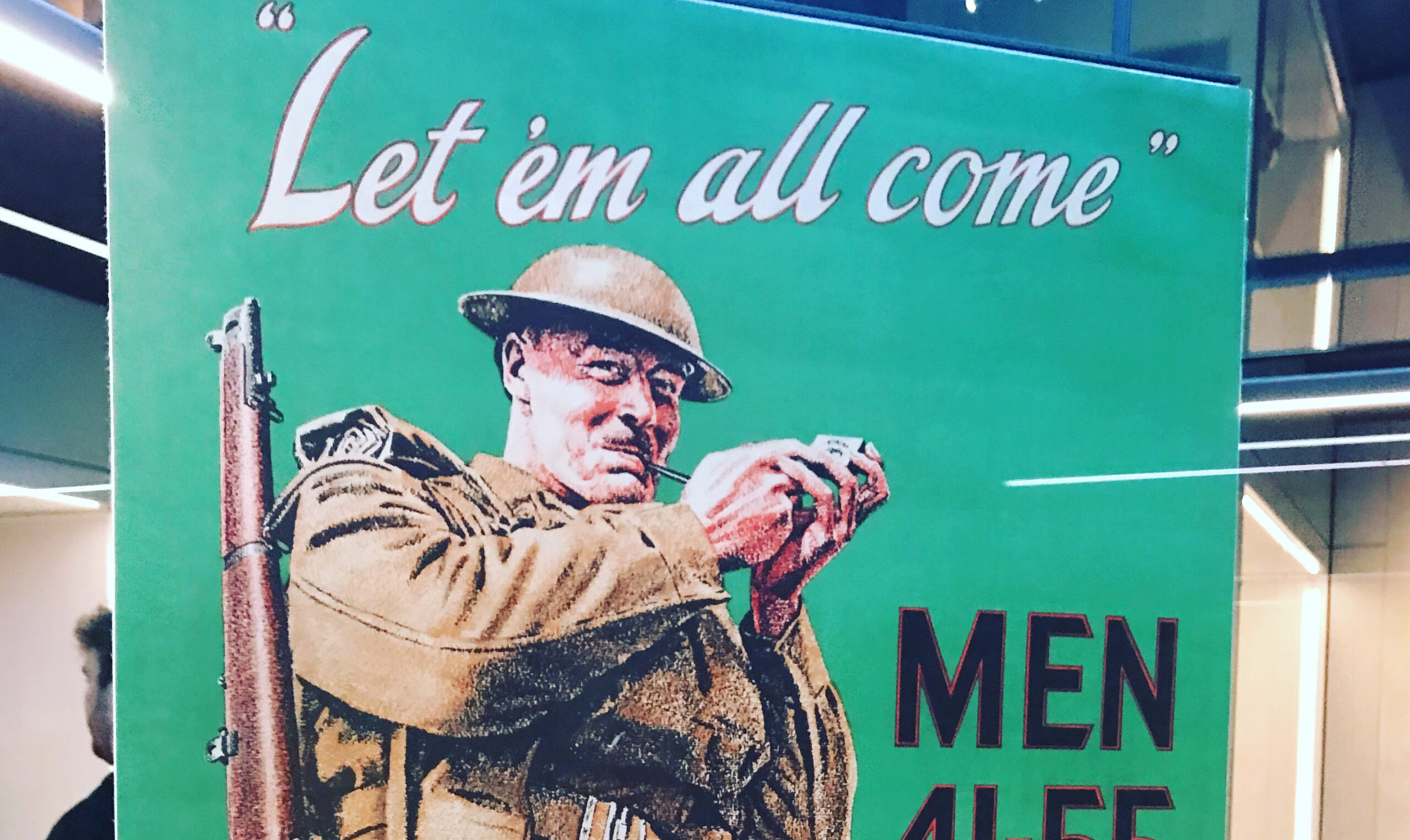
To the new Second World War gallery at the Imperial War Museum. And it’s really rather good.
The previous WW2 ‘experience’ in the museum focussed on ‘hinge’ points during the war, giving not a comprehensive overview of the conflict, but using artefacts from the collection to look at turning points such as D-Day, Dunkirk, the Battle of the Atlantic and so on. This was great for those of us who like seeing ‘things’, but those objects were frequently lacking context – the big picture was missing, and certain theatres were very poorly represented (most of the war in the Far East, for example, even the Eastern Front to a large degree). This made for a very anglo-centric history of the war, diminishing its global nature.
The IWM’s First World War gallery is a linear historical journey through the Great War, which works exceptionally well (from the optimism of 1914 to the muddy stalemate of the subsequent years), and this new gallery starts in a similar vein.
We go from the pre-war period (Auden’s ‘low, dishonest decade’) through the Munich Crisis to the invasion of Poland and the British and French declaration of war.T here then follows the ‘Phoney War’, the German invasion of the Low Countries, the collapse of France, Dunkirk, the Battle of Britain, the Blitz … the history we think we know well, but with personal stories attached and with extra – and to me, previously unknown – details. (For example, after the fall of France the Germans murdered 3,000 French colonial troops because they were black. The newsreels of this were cheered in German cinemas.)
As the war develops it becomes harder to keep to a strict chronology, but the gallery still maintains a sense of moving through the conflict as the emphasis shifts between the different theatres in the global struggle – North Africa, the German invasion of the Soviet Union, the Japanese attacks. Throughout it all the effects of the war on the civilian populations and non-combatants is shown – the emaciated women prisoners of the Japanese, the children recruited into the German defence forces, the barbarity of the Nazi occupation of Eastern Europe, the mobilisation of nearly all adults into the British war effort.
There are films, audio-visual, maps, recordings and all the interactive gubbins of a modern museum, some of which work better than others. Generally though, the explanations and the stories are successful, interweaving the personal to the historical to provide an overall narrative of the war – its causes, strategies, outcomes – that is clear and concise. There was a lot of stuff I learned, and more to be taken in on subsequent visits (I was there about an hour, but I’d say you need twice that to do the exhibition justice.)
Niggles are minor, and probably personal: there’s less on the war in Western Europe than I would have liked, and there were more uniforms on display than I could generate interest for. (And I still miss the huge blow ups of the Bomb Damage Maps from the previous ‘Family at War’ gallery.) Overall it’s a pretty impressive curatorial achievement.
The new gallery comes with a very good-looking book called ‘Total War’ that incorporates and expands upon the material on display.
As a foot note: many of the objects from the previous display are still where they were in the space around the central atrium – the Wellington cockpit, the Sherman tank, the midget submarine etc – but they all now seem a little adrift, both physically (they seem isolated) and historically (there is no context for the pieces). Hopefully the museum has plans to integrate these with the experience of the new gallery.
